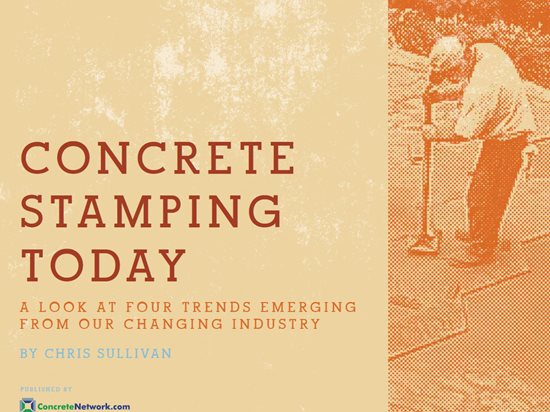- Concrete Stamps
- Get the Look - Stamping Pictures
- Buying Tips for Concrete Stamping Tools: Advice that will help you make smart choices
- Concrete Stamp Cost
- Types of Concrete Stamps: A comparison chart of popular stamps & patterns
- Stamping & Texturing Tools
- Concrete Stamp Mats
- Concrete Texturing Skins
- Medallion Stamps
- Texture Rollers
- Step Forms & Liners
- Installing Stamped Concrete
- How to Stamp Concrete
- Coloring Stamped Concrete
- Concrete Stamp Release Agent
- Sealers for Stamped Concrete
Trends in Stamped Concrete Patterns and Coloring Processes
More contractors are creating custom looks using existing materials in new waysThis is an excerpt from the new e-book “Concrete Stamping Today,” part of a series of reports from ConcreteNetwork.com on trends and insights about decorative concrete applications.
Free E-book:
Concrete Stamping Today
Discover four emerging trends in concrete stamping from ConcreteNetwork.com’s new e-book. You’ll also get insights and advice from veteran installers that will help you stay profitable in today’s market.
Download Concrete Stamping Today (PDF)
What was popular 20 years ago in the stamped concrete industry is still popular today, but with a twist. The trend is bigger patterns with more natural color combinations. “It’s all about custom and different,” says Terry Grimble, director of technical services for Bomanite Company, Denver, Colo. “Architects are looking for diversity. We have seen an increase in designers specifying custom tools for one specific project.”
So how are today’s stamped concrete contractors meeting this demand for more customization? Often they are taking existing stamp patterns and coloring systems and adding their own creative touches to create looks that are all their own.
Hand toolingOften the use of custom tooling requires a significant financial expenditure, and it can take 4 to 6 weeks for custom stamps to be manufactured. Another way to accomplish a custom look is to use existing large pattern stamps or seamless texture skins and hand tool custom joints or patterns. The latter requires more time and craftsmanship, but can produce an amazing custom look that is not easily reproducible. Chris Becker of Becker Architectural Concrete, Minneapolis, Minn., has won several national and regional awards for his stamped concrete work. “We use the same seamless texture skin we have been using for eight years to achieve a base pattern, and then we sawcut the design we want and come back and post-color using our own color wash system.” The result is a project that is tailored to the client’s wishes, and no two projects are alike.
Tom Ralston of Tom Ralston Concrete, Santa Cruz, Calif., another award-winning installer, blends different seamless textures to create a unique base of stamped concrete. “We mix multiple store-bought seamless textures and even some of our own custom textures to achieve a unique look. We try to add our own personal touch on every job,” he says.
Achieving unique color effectsWhen it comes to coloring, the trend has increasingly been to post-color work to achieve more customization. This involves stamping the concrete with some or no color, then waiting until the concrete has set to post-color or highlight the work. The post-coloring method has been around for decades, but has recently become a trend as installers are finding it easier and cleaner and can achieve greater color control. The use of post-coloring is also in response to industry demand. “[Architects] now know there are no limitations with color and they have the ability to customize designs to meet their clients’ needs,” says Bob Harris, president of the Decorative Concrete Institute, Temple, Ga.
New post-coloring products and systems from a handful of manufacturers have helped to drive this trend. “When used properly, these post-coloring methods are great tools to create unique and custom work,” says Grimble. The use of integral color also continues to increase, with fewer installers using color hardener.
Another coloring trend involves blending multiple colors to achieve more realistic effects. After all, stamped concrete is the art of finishing concrete to have it resemble some other natural material. This can entail the use of multiple colors within a product family, like release powder, or blending different colors from different products, such as release powder and a post-applied color wash or stain. “The stamp establishes our canvas, and from there we add our own unique look with grouting and our coloring process,” says C.J. Salzano of Salzano Custom Concrete, Centreville, Va.
Ralston takes a mix-and-match approach to differentiate his work. “I mix and match different colors as well as different media to create something realistic and unique,” he says.
Harris likes to combine different finishes to create something truly extraordinary. “Combining different concrete finishes, such as integrally colored exposed aggregate or a sponge float finish, can help take a stamp concrete project over the top,” he says.
Related resources:
Pattern and Color Options for Stamped Concrete
Colored Concrete: An Overview of Options to Color Concrete
Video: Concrete Texture Skins
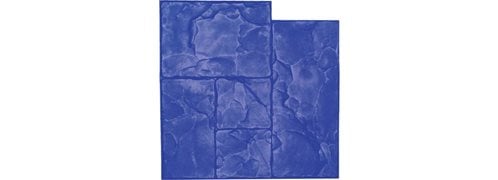 Ashlar Cut Slate Stamp
Hand-tooled with a pronounced texture
Ashlar Cut Slate Stamp
Hand-tooled with a pronounced texture
 Herringbone Used Brick
Tool Size is 44" x 27"
Herringbone Used Brick
Tool Size is 44" x 27"
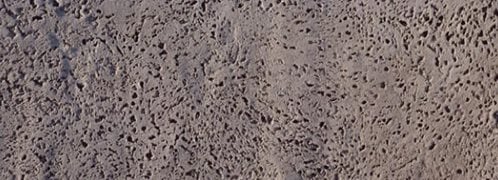 Travertine Coarse
Groutable
Travertine Coarse
Groutable
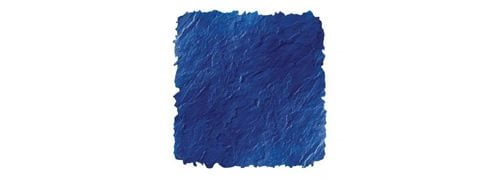 Bluestone Texturing Skin
6 skin set - only $1,173.20
Bluestone Texturing Skin
6 skin set - only $1,173.20
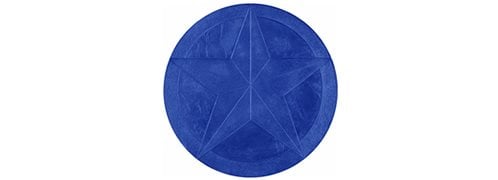 Five Point Star Medallion
Concrete stamp only - $292.00
Five Point Star Medallion
Concrete stamp only - $292.00
 Brickform Stamping Tools
Precision stamping tools
Brickform Stamping Tools
Precision stamping tools
